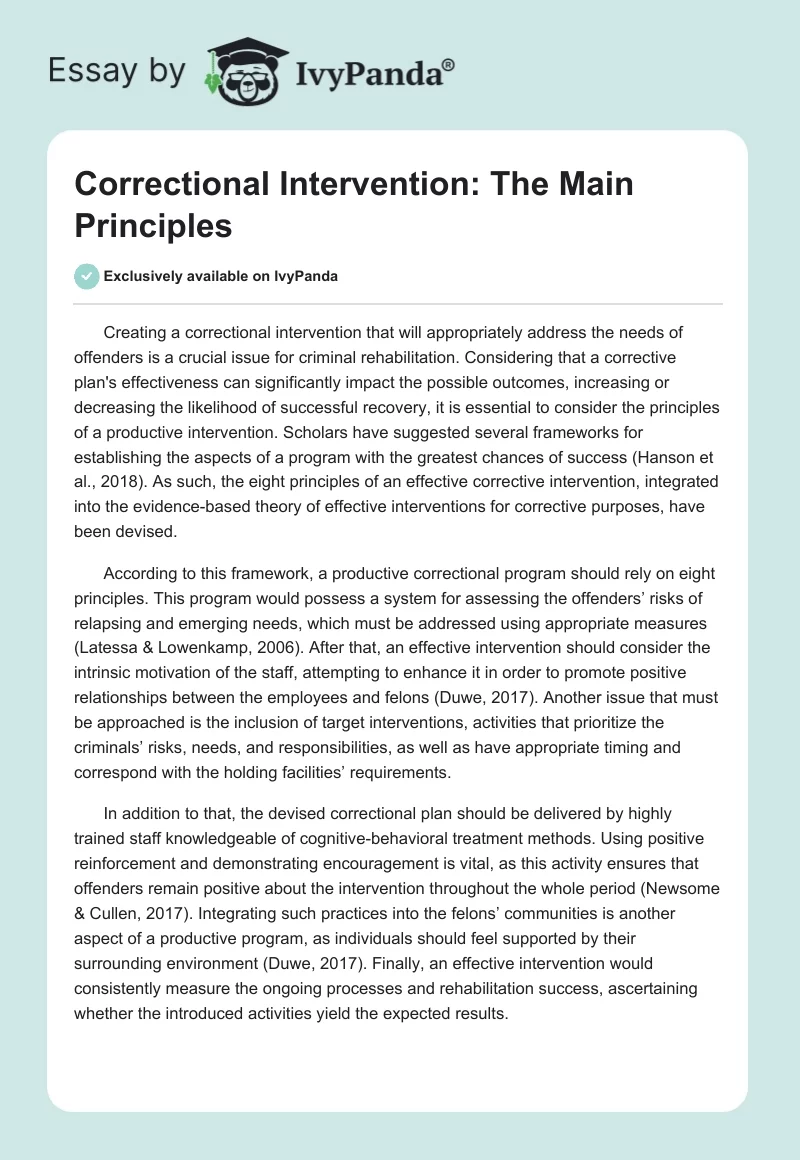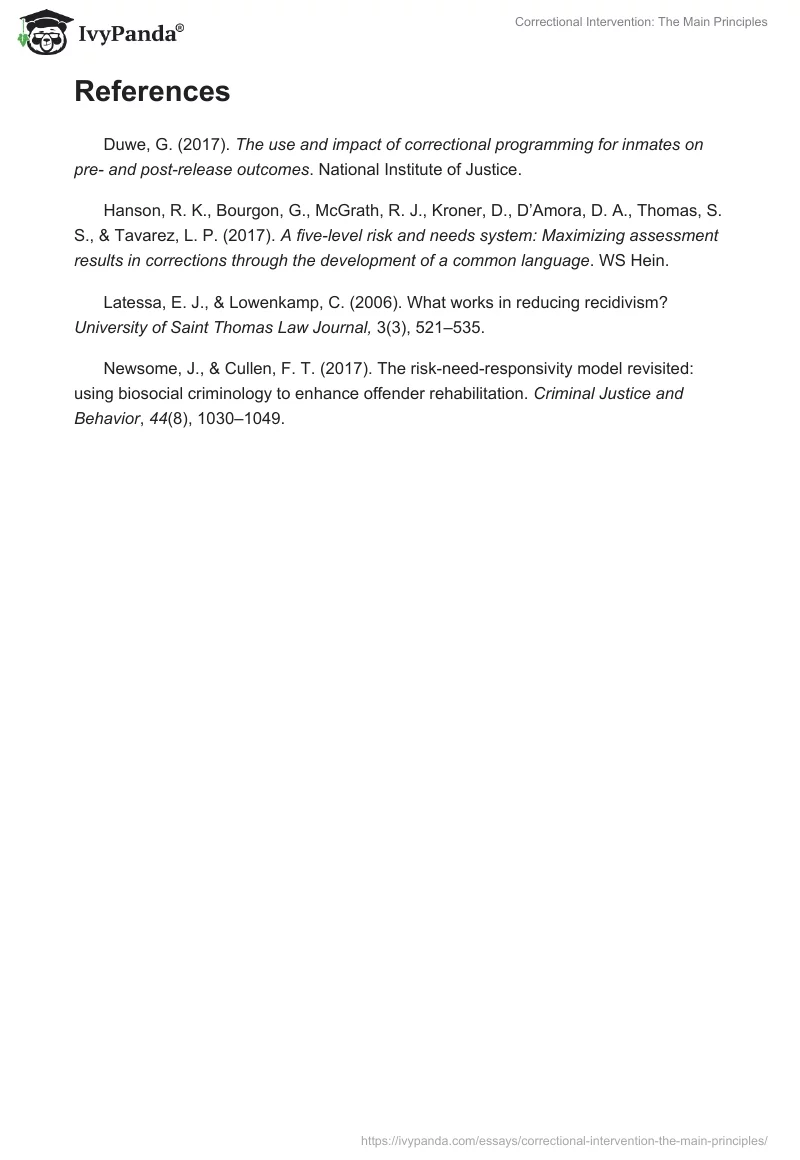Creating a correctional intervention that will appropriately address the needs of offenders is a crucial issue for criminal rehabilitation. Considering that a corrective plan’s effectiveness can significantly impact the possible outcomes, increasing or decreasing the likelihood of successful recovery, it is essential to consider the principles of a productive intervention. Scholars have suggested several frameworks for establishing the aspects of a program with the greatest chances of success (Hanson et al., 2018). As such, the eight principles of an effective corrective intervention, integrated into the evidence-based theory of effective interventions for corrective purposes, have been devised.
According to this framework, a productive correctional program should rely on eight principles. This program would possess a system for assessing the offenders’ risks of relapsing and emerging needs, which must be addressed using appropriate measures (Latessa & Lowenkamp, 2006). After that, an effective intervention should consider the intrinsic motivation of the staff, attempting to enhance it in order to promote positive relationships between the employees and felons (Duwe, 2017). Another issue that must be approached is the inclusion of target interventions, activities that prioritize the criminals’ risks, needs, and responsibilities, as well as have appropriate timing and correspond with the holding facilities’ requirements.
In addition to that, the devised correctional plan should be delivered by highly trained staff knowledgeable of cognitive-behavioral treatment methods. Using positive reinforcement and demonstrating encouragement is vital, as this activity ensures that offenders remain positive about the intervention throughout the whole period (Newsome & Cullen, 2017). Integrating such practices into the felons’ communities is another aspect of a productive program, as individuals should feel supported by their surrounding environment (Duwe, 2017). Finally, an effective intervention would consistently measure the ongoing processes and rehabilitation success, ascertaining whether the introduced activities yield the expected results.
References
Duwe, G. (2017). The use and impact of correctional programming for inmates on pre- and post-release outcomes. National Institute of Justice.
Hanson, R. K., Bourgon, G., McGrath, R. J., Kroner, D., D’Amora, D. A., Thomas, S. S., & Tavarez, L. P. (2017). A five-level risk and needs system: Maximizing assessment results in corrections through the development of a common language. WS Hein.
Latessa, E. J., & Lowenkamp, C. (2006). What works in reducing recidivism? University of Saint Thomas Law Journal, 3(3), 521–535.
Newsome, J., & Cullen, F. T. (2017). The risk-need-responsivity model revisited: using biosocial criminology to enhance offender rehabilitation. Criminal Justice and Behavior, 44(8), 1030–1049.


